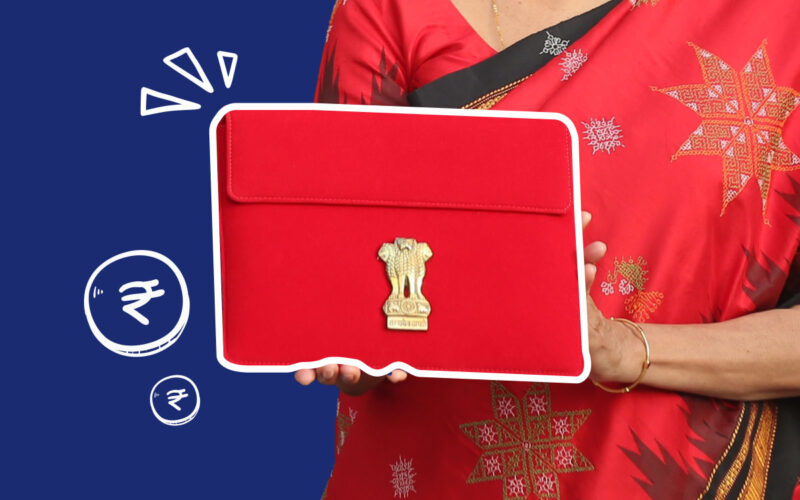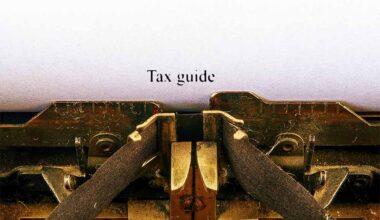On Thursday, February 1, Interim Union Budget for the fiscal year 2024-25 was presented by Finance Minister Nirmala Sitharaman. The complete budget for this fiscal year is to be introduced in July, following the formation of a new government after the upcoming general elections in the first half of 2024. An interim budget helps the government manage its financial obligations until a new government is formed. It outlines expenditures and revenues during this period.
Table of Contents Show
You can get the interim budget 2024 document by visiting the official website www.indiabudget.gov.in. On this website, you will find the complete speech and can download the PDF version of the interim budget.
What is Interim Budget?
An interim budget is a budget presented by the government for a limited period, usually for a few months, before the full budget for the financial year is presented. It is typically presented prior to the general elections, when the government’s term is coming to an end. The interim budget outlines the government’s expenditure and revenue estimates for the remaining period until the full budget is presented by the newly elected government. It is meant to keep the government functioning and meet essential expenses until the new budget is formulated and passed.
Difference Between Union Budget and Interim Budget?
| Interim Budget | Union Budget |
|---|---|
| Presented by the Central Government just before the General elections | An annual budget presented by the Central Government in the Parliament |
| Passed without discussion in Lok Sabha | Passed after complete discussions in Lok Sabha |
| The income and expenses of the previous year are mentioned. Mentions the expenses for a few months till the change of government. | Has two distinct sections: one that outlines the income and expenses of the previous year, and another that describes the government’s strategy to generate funds through various measures and explains their intended utilization for national development. |
| Presented during the election year, for a duration of approximately 2 to 4 months of the fiscal year | Union Budget is for the entire fiscal year |
| Has only a summary of the expenses and income of the previous year | Has Income and expenses of the previous year would be provided in detail |
Who Presents the Interim Budget?
The Interim Budget is typically presented by the incumbent government before the general elections. It is presented by the Finance Minister on behalf of the ruling government.
*The term “incumbent” refers to the current holder of a particular position or office. In the context of politics, it typically refers to the current elected official who is currently serving in a specific government position.
Interim Budget Highlights of 2024
Sitharaman began her speech by acknowledging that the Indian economy has experienced significant positive changes over the past 10 years.
- The projected fiscal deficit for the fiscal year 2023-24 (FY24) stands at 5.8% of the GDP, while for FY25, it is expected to be 5.1% of the GDP. The goal is to bring down the fiscal deficit to below 4.5% of the GDP in 2025-26 (FY26).
- There are no modifications to the income tax slabs.
- The government has made a major decision to waive off outstanding direct tax demands up to Rs 25,000 for the period up to the financial year 2009-10, and up to Rs 10,000 for the financial years 2010-11 to 2014-15.
The government is aiming to develop India into a prosperous nation called ‘Viksit Bharat’ by 2047. Our main objective is “Sabka Sath, Sabka Vikas”.
- The Finance Minister has announced that an additional 2 crore houses will be made available under the Pradhan Mantri Awas Yojana – Gramin (PMAY-G).
- The tax exemptions given to start-ups have been extended until March 31, 2025.
- Finance Minister, Sitharaman, shared that the number of people filing taxes has increased by 2.4 times, and the amount of direct taxes collected has tripled since 2014. It is projected that the tax receipts for the year 2024-25 will be around Rs 26.02 lakh crore.
- To enhance the operations of passenger trains, Finance Minister has announced three major economic railway corridor programs. These programs include mineral, cement corridors and energy, high traffic density corridors and port connectivity corridors. The main objective of these programs is to improve logistics efficiency, reduce costs, and alleviate congestion on busy routes. As a result, passenger train operations will become safer and faster, benefiting travelers. Additionally, these initiatives will also lead to a reduction in overall logistics expenses.
- The Skill India Mission has successfully trained 1.4 crore youth, providing them with valuable skills. Additionally, 54 lakh youth have been upskilled and reskilled to enhance their abilities. The mission has also led to the establishment of 3000 new ITIs (Industrial Training Institutes). Furthermore, the government has set up several new institutions of higher learning, including 7 IITs, 16 IIITs, 7 IIMs, 15 AIIMS, and 390 universities, creating more opportunities for education and growth.
- A fund of Rs 1 lakh crore will be created through a 50-year interest-free loan. This fund will offer long-term financing and re-financing options with extended repayment periods and low to zero interest rates. The aim is to encourage the private sector to expand their research and innovation efforts in emerging fields.
- Under the PM-SVANidhi scheme, 78 lakh street vendors have received credit assistance. Out of this, 2.3 lakh vendors have been able to avail credit for the third time.
- Over the past ten years, our development approach has changed significantly. We have shifted from focusing solely on providing support up to the village level to a more inclusive and compassionate approach. Our development programs now aim to reach every household and individual. We have implemented initiatives such as ‘housing for all’, ‘har ghar jal’ (water for every household), electricity access for all, cooking gas for all, and ensuring bank accounts and financial services for everyone. These programs have been implemented in a remarkably short period of time.
- India took on the G20 Presidency during a challenging period for the global economy. With high inflation, interest rates, and public debt, along with low growth and trade, as well as climate challenges, the world was facing multiple crises. The pandemic further worsened the situation, causing shortages in food, fertilizer, fuel, and finances worldwide. However, India effectively navigated through these difficulties and emerged as a leader. The country played a crucial role in building consensus and finding solutions to these global problems, showing the way forward for the international community.
- The Finance Minister mentioned that free ration has been provided to 80 crore people, ensuring food security. The government has also increased minimum support prices for farmers’ produce, boosting their income. These measures aim to stimulate economic growth and create jobs in rural areas.
- By implementing the ‘Direct Benefit Transfer‘ system through PM-Jan Dhan accounts, the government has saved a significant amount of money. This amounts to `2.7 lakh crore, which was previously lost due to leakages. These savings have allowed for increased funding towards the ‘Garib Kalyan’ initiative, which aims to uplift the welfare of the underprivileged.
- Sitharaman also shared plans to create more medical colleges by using the existing hospital infrastructure from different departments. To look into the details and give suggestions, a committee will be formed.
- Sitharaman stated that banning triple talaq and reserving one-third of seats for women in the Lok Sabha and state assemblies have contributed to improving their status and dignity. Additionally, ensuring that over 70 percent of houses under the PM Awas Yoajana in rural areas are given to women has also played a significant role in enhancing their respect and honor.
- The government plans to provide free electricity of up to 300 units per month to one crore households through rooftop solarisation. This initiative aligns with the Prime Minister’s commitment on the momentous occasion of the consecration of Shri Ram Mandir in Ayodhya. Additionally, the government aims to achieve ‘net zero’ emissions by 2070.
- To boost tourism, the government plans to provide long-term interest-free loans to states in order to promote development in the sector.
- In terms of social justice, the Finance Minister stated that our government is committed to a comprehensive, widespread, and inclusive approach to development.
Get detailed information on the interim budget: indiabudget.gov.in.
To conclude it for you, an interim budget is presented by the government for a limited period, usually a few months, before the full budget is presented. The interim budget is typically presented by the Finance Minister on behalf of the ruling government. It outlines the government’s expenditure and revenue estimates until the new budget is formulated and passed.
Disclaimer: Nothing on this blog constitutes investment advice, performance data or any recommendation that any security, portfolio of securities, investment product, transaction or investment strategy is suitable for any specific person. You should not use this blog to make financial decisions. We highly recommended you seek professional advice from someone who is authorised to provide investment advice.





